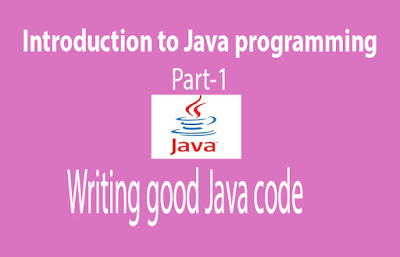Java platform overview
Java technology is used to develop applications for a wide range of environments, from consumer devices to heterogeneous enterprise systems. In this section, get a high-level view of the Java platform and its components.
The Java language
Like any programming dialect, the Java dialect has its own particular structure, sentence structure guidelines, and programming worldview. The Java dialect's customizing worldview depends on the idea of OOP, which the dialect's components bolster.
The Java dialect is a C-dialect subordinate, so its sentence structure rules look much like C's. For instance, code pieces are modularized into techniques and delimited by supports ({ and }), and factors are announced before they are utilized.
Fundamentally, the Java dialect begins with bundles. A bundle is the Java dialect's namespace system. Inside bundles are classes, and inside classes are strategies, factors, constants, and the sky is the limit from there. You find out about the parts of the Java dialect in this instructional exercise.
The Java compiler
When you program for the Java stage, you compose source code in .java records and afterward gather them. The compiler checks your code against the dialect's grammar rules, then works out bytecode in .class documents. Bytecode is an arrangement of guidelines focused to keep running on a Java virtual machine (JVM). In including this level of reflection, the Java compiler varies from other dialect compilers, which work out directions appropriate for the CPU chipset the program will keep running on.
The JVM
At runtime, the JVM peruses and translates .class records and executes the program's guidelines on the local equipment stage for which the JVM was composed. The JVM deciphers the bytecode similarly as a CPU would translate low level computing construct guidelines. The distinction is that the JVM is a bit of programming composed particularly for a specific stage. The JVM is the heart of the Java dialect's "compose once, run-anyplace" guideline. Your code can keep running on any chipset for which an appropriate JVM usage is accessible. JVMs are accessible for real stages like Linux and Windows, and subsets of the Java dialect have been actualized in JVMs for cell phones and specialist chips.
The garbage collector
As opposed to compelling you to stay aware of memory designation (or utilize an outsider library to do as such), the Java stage gives memory administration out of the case. At the point when your Java application makes a question case at runtime, the JVM consequently dispenses memory space for that protest from the store—a pool of memory put aside for your program to utilize. The Java city worker keeps running out of sight, monitoring which protests the application does not require anymore and recovering memory from them. This way to deal with memory taking care of is called verifiable memory administration since it doesn't oblige you to compose any memory-taking care of code. Junk gathering is one of the basic elements of Java stage execution.
The Java Development Kit
When you download a Java Development Kit (JDK), you get — notwithstanding the compiler and different apparatuses — an entire class library of prebuilt utilities that help you achieve most regular application-advancement assignments. The most ideal approach to get a thought of the extent of the JDK bundles and libraries is to look at the JDK API documentation.
The Java Runtime Environment
The Java Runtime Environment (JRE; also known as the Java runtime) includes the JVM, code libraries, and components that are necessary for running programs that are written in the Java language. The JRE is available for multiple platforms. You can freely redistribute the JRE with your applications, according to the terms of the JRE license, to give the application's users a platform on which to run your software. The JRE is included in the JDK.












0 coment�rios:
Post a Comment